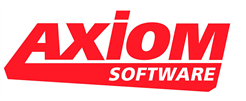Supplier and Counterfeit Risk Management and Your Legacy ERP
Axiom Software
How old is your ERP?
This is an important question, because a lot of people are using painfully obsolete systems. And I don’t just mean “Windows 2000” obsolete; I mean “Ronald Reagan was president the last time this system was updated” obsolete. Yes, it’s an often-painful irony that the companies that source and distribute electronic components are frequently using outdated technology to do business. And while you may feel like you’re trucking along just fine, the fact is that, if you’re using a system that was new when it was still “Morning in America,” then you’re crippling your ability to effectively source components, track shipping, and manage inventory. And that doesn’t just make you less competitive; it exposes you to the risk of unknowingly handling subpar or even counterfeit parts. That severely reduces your credibility as a parts distributor – and without credibility, what do you have?
You need to get your supply chain under control, which requires real-time monitoring and the ability to trace counterfeiting related to your services – and that’s a feature set you simply are never, ever going to find in a thirty year-old ERP. You have to be able to get solid Track & Trace capabilities in your operation, something that can tell you when the parts you’re buying were created, how they were made, when were they shipped and received, and what the original manufacturing ID number was. Everything from capturing manufacturing data to making it actionable in your system has to be handled by your ERP – or it’s not going to be handled at all.
The thing is that reliable Track & Trace abilities have been around for ages now, but so many companies are relying on ancient software that they still lack what should really be a default business operation by this point. Product authentication is sort of the first responsibility of the parts distributor; you have to be able to stand by the parts you’ve sourced, because if you can’t, you’ll face lost business, high returns, and people calling in their warranties, and that’s not just lost revenue – that’s lost face. That’s a massive barrier that will stop people from doing business with you in the future. Who wants to hire the distributor that sells fake stuff that will just fail?
Nobody. Nobody wants to even talk to that guy.
The thing is, of course, that upgrading to a modern ERP can often feel as painful as dealing with the consequences of not upgrading. The trouble is easy to understand; your ERP rules your business. You can’t do anything without it – you can’t place orders or check your inventory. Sure, it’s old, but it’s been working well enough – and your whole staff is trained on it. An upgrade means shutting down for days on end just to get it installed and operational; meanwhile, it’s gonna be another three months of reduced efficiency (and periodic grindings-to-a-halt) before everyone is up to speed. The cost in lost business, lost time, and lost opportunity make the price of the software seem trivial by comparison.
But you can’t stop your thinking there. Because as difficult – and as painful and fraught – as an upgrade is going to be, the alternative is your business sinking, inch by inch and day by day, deeper and deeper into irrelevance. And the costs of that far outweigh the cost of an upgrade.
If you want your business to survive, you have to get past “it works well enough.”
So here are the questions you need to ask yourself when you take a look at that old C64 you’ve got running your twelve-sites-in-six-countries operation and wonder if it’s time to maybe, just maybe, upgrade:
1. Is the current system hurting your operation?
2. Will an upgrade allow your operation to grow or change?
3. Is your system meeting your business needs, such as offering web or mobile access to customers, or do you have to use cumbersome workarounds for needed functionalities?
4. Can your current system integrate with the applications or systems you need to deploy?
5. Is the cost of maintaining the system getting out of control?
6. Do you have the IT support needed to keep it running long-term?
7. How much time are people spending outside the system on manual work?
8. Are you prepared to invest in the effort needed to get increased productivity and new business opportunities?
And if, at the end, you realize an upgrade needs to happen – don’t be afraid. Take a deep breath, and step boldly forward.
Your business will thank you.
About Axiom
Founded in 1992 and located in Valhalla, NY, Axiom Software is a leading developer of ERP software solutions specializing in support for the electronics distribution industry. Axiom is dedicated to helping their clients do more in less time, increasing operational efficiency through business intelligence and enterprise-level software solutions.
SEE MORE BLOG ENTRIES
|

|